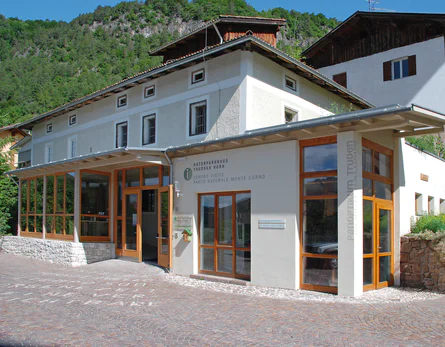The Monte Corno visitor centre is located in the building of the “old mill” in the centre of Trodena. Under the theme “Make visible the hidden” it gives information on the biodiversity of the Nature Park Monte Corno. Furthermore, the visitor also gets information about the geological structure, the flora and fauna of the nature park as well as on the culture and history of the place. Centrepiece of the house is certainly the electricity-powered elevator mill buildt 1948-49. It's three stories high and the only one in South Tyrol which works today. The flour, which is being grinded in the summer season on the mill grinding days, is used for baking bread.
In the year 2020 we enjoy 40 years Nature Park.
The Visit centre is open also on Sunday during the months July, August and September.




































































